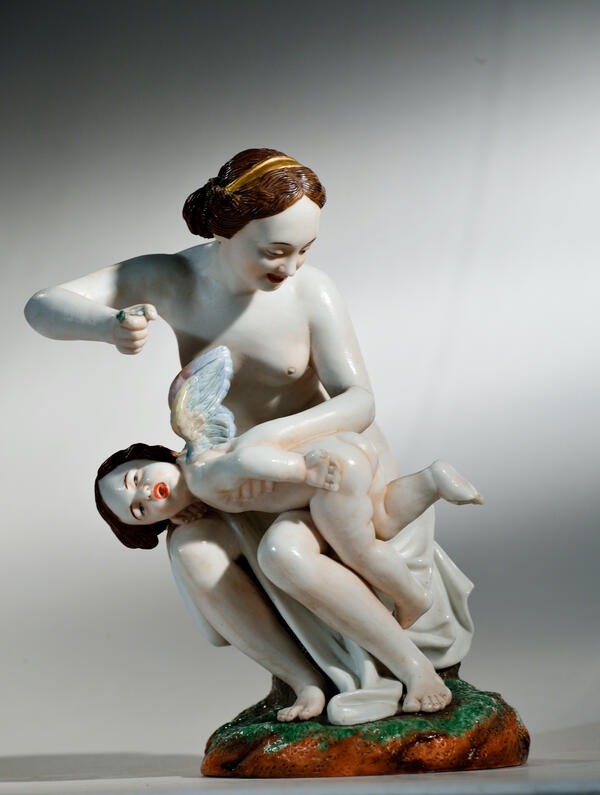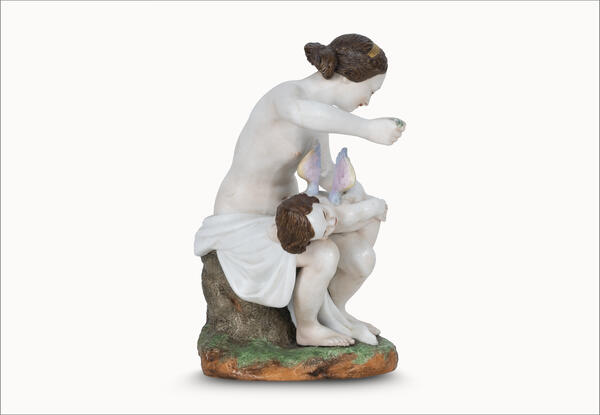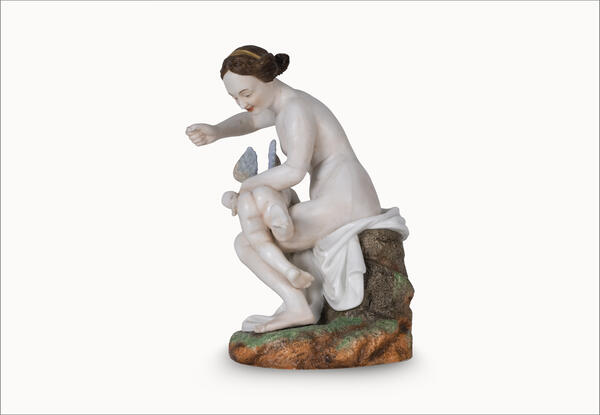The history of one of the most successful porcelain factories in Russia — the Kornilov Brothers Porcelain Factory — began in 1835, when it was founded by the merchant Maria Vasilievna Kornilova on the right bank of the Neva River. Kornilova’s five sons helped manage the factory, which significantly simplified all financial activities.
Under the leadership of the Kornilov brothers, the porcelain factory developed so rapidly that after eight years of its existence, the state emblem of Russia became one of its logos and the Imperial Court commissioned the factory to create various works. This was due to the fact that the brothers managed to achieve the highest quality of finished products.
The Kornilovs were not afraid to experiment, knowing that not all innovations would be successful. However, the brothers were not deterred by difficulties and failures. By the 1870s, the products of the Kornilov Brothers Porcelain Factory had surpassed the products of the Imperial Porcelain Factory in technical characteristics thanks to bold experiments, as well as the best masters and the latest technological achievements. Moreover, elegant products made of flawless white porcelain, fired and painted with the highest skill, quickly outclassed the best porcelain of European factories in terms of quality. Having started from scratch, the Kornilov brothers achieved such success in the production of porcelain that their works were presented at various exhibitions.
Although the elite porcelain products of the Kornilov Brothers Factory were of excellent quality and were known all over the world, only rich people could afford to buy them due to the high price of finished products. It is for this reason that today elite Kornilov porcelain is of much greater value to collectors than porcelain from other factories.
The sculptural composition of the Kornilov Brothers Factory “Venus with Cupid” is a magnificent example of the legacy of the historical Baroque style. The porcelain composition is inspired by a mythological theme, the plot of which was borrowed from the work of Lucian “Dialogues of the Gods”. It was reinterpreted in accordance with Symbolism of the last third of the 18th century. Allegory of senses and mythological plots gained great popularity among customers, but such works were limited editions and few of them have been preserved.
Under the leadership of the Kornilov brothers, the porcelain factory developed so rapidly that after eight years of its existence, the state emblem of Russia became one of its logos and the Imperial Court commissioned the factory to create various works. This was due to the fact that the brothers managed to achieve the highest quality of finished products.
The Kornilovs were not afraid to experiment, knowing that not all innovations would be successful. However, the brothers were not deterred by difficulties and failures. By the 1870s, the products of the Kornilov Brothers Porcelain Factory had surpassed the products of the Imperial Porcelain Factory in technical characteristics thanks to bold experiments, as well as the best masters and the latest technological achievements. Moreover, elegant products made of flawless white porcelain, fired and painted with the highest skill, quickly outclassed the best porcelain of European factories in terms of quality. Having started from scratch, the Kornilov brothers achieved such success in the production of porcelain that their works were presented at various exhibitions.
Although the elite porcelain products of the Kornilov Brothers Factory were of excellent quality and were known all over the world, only rich people could afford to buy them due to the high price of finished products. It is for this reason that today elite Kornilov porcelain is of much greater value to collectors than porcelain from other factories.
The sculptural composition of the Kornilov Brothers Factory “Venus with Cupid” is a magnificent example of the legacy of the historical Baroque style. The porcelain composition is inspired by a mythological theme, the plot of which was borrowed from the work of Lucian “Dialogues of the Gods”. It was reinterpreted in accordance with Symbolism of the last third of the 18th century. Allegory of senses and mythological plots gained great popularity among customers, but such works were limited editions and few of them have been preserved.





